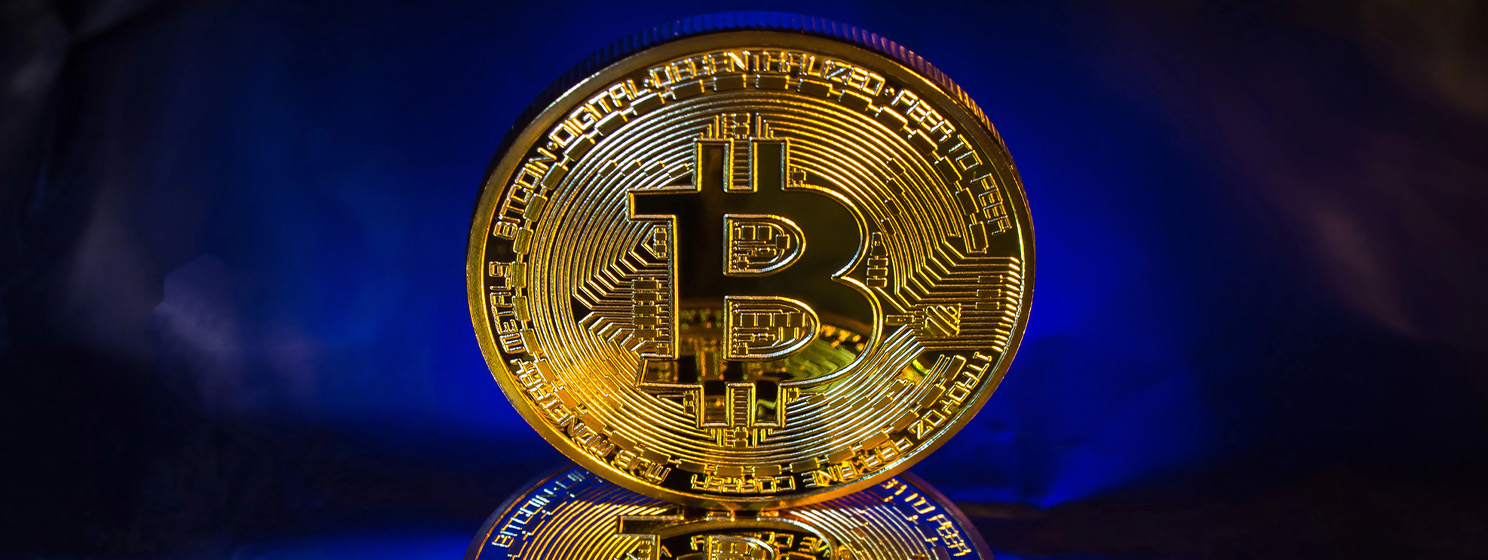|
Getting your Trinity Audio player ready...
|
MicroStrategy’s (NASDAQ: MSTR) plan to buy every BTC token in existence is facing competition from other companies that no longer wish to do what they originally set up to do.
On November 11, MicroStrategy announced that it had purchased an additional 27,200 BTC tokens between October 31 and November 10. The bill for this mega-purchase was just over US$2 billion, with an average price paid per token of $74,463.
Just one week later, Michael Saylor’s company announced that it had purchased a further 51,780 BTC at an average price of $88,627 for a total cost of $4.6 billion—its biggest buy to date. The sprees pushed the company’s total BTC hoard to 331,200—nearly 1.6% of all the BTC that will ever be—with an average purchase price of $49,874.
On November 19, BTC briefly flirted with yet another all-time high of ~$94,000, spurred by the election of Donald Trump to a second presidential term and hopes of a regulatory reprieve from the annoying stuff that other financial sectors call rules.
MicroStrategy has been financing its BTC purchases via a mix of selling stock and taking on new debt. On November 18, MicroStrategy announced plans to raise another $1.75 billion in new debt (with a potential top-up to $2 billion).
With MicroStrategy’s share price also hitting new highs—closing above $430 on November 19, around 8x where the shares were at this time last year—Saylor is clearly feeling cocky, as these new convertible notes will pay interest of 0%. In other words, buyers will effectively be betting that the company’s stock will continue to rise based solely on its BTC holdings. Otherwise, there’s no benefit.
MicroStrategy recently pledged to raise $42 billion over the next three years to buy even more BTC. Considering that (a) his company has purchased $6.6 billion worth of BTC in less than three weeks and (b) the average per-token prices of these purchases vs. the current price, Saylor may well be the sole source of the hot air currently inflating BTC’s balloon.
Also, recall that MicroStrategy’s data analytics business—the thing it was set up to do—remains a money loser, adding another $18.5 million in red ink during the third quarter of 2024. One suspects Saylor no longer cares and will only maintain this data analytics façade until it no longer suits his tax purposes.
MicroStrategy’s market cap is now 2.5x the value of its BTC holdings, making it a pseudo-exchange traded fund (ETF) that doesn’t grant shareholders any claim on the company’s BTC. And yet institutions like Bank of America, Goldman Sachs (NASDAQ: GS), Morgan Stanley (NASDAQ: MS), Vanguard Group, and Capital International Investors are snapping up MSTR shares by the millions.
Given that every new BTC bulk buy pushes MicroStrategy’s average token purchase price higher, coupled with BTC’s proven history of shedding 50% or more of its fiat value in a matter of months, the company—not to mention its shareholders—is taking a major gamble here. Should BTC crash hard (again), Saylor might find, to his chagrin, that he is the market and there’s no one to sell to on the way down.
One other thing: Saylor remains MSTR’s largest shareholder, but the recent sales have pushed his control of aggregate voting power below 50%. Saylor alluded to this reality in MSTR’s Q3 earnings report but insisted that “there’s nothing that we’re going to do that [other shareholders are] not going to want us to do.” Maybe, but just wait until the next time BTC tanks and Saylor proposes issuing more debt to ‘buy the dip.’
Imitation is the sincerest form of f*ckery
Saylor’s (for the moment) successful strategy is now being mimicked by a growing number of companies, both within and outside the digital asset space.
On November 18, block reward mining outfit MARA (NASDAQ: MARA), formerly Marathon Digital, announced plans to raise at least $850 million (and possibly $1 billion) in new debt to help pay off some old debt and buy more BTC. MARA already holds 27,562 BTC and has pledged not to sell any of the hundreds of new tokens it mines each month, at least, so long as suckers, er, investors keep buying its debt.
That same day, California-based medical technology firm Semler Scientific (NASDAQ: SMLR) announced the purchase of 215 BTC with $17.7 million it raised by selling shares. Semler now holds 1,773 BTC purchased at an average price of $69,682 apiece.
Also that same day, Tampa-based Oasis Engineering said it would begin allocating 25% of its cash flow to BTC—up from its current 15%—starting December 15, the beginning of its new fiscal year. This step reflects Oasis’s self-identity as a company that’s “committed to innovation” and most definitely doesn’t resemble a five-year-old soccer player chasing the ball because that’s what everyone else on the field is doing.
Also, that same day, Chicago-based pharma firm Cosmos Health (NASDAQ: SMLR) announced it was embarking on a treasury reserve asset strategy that will include both BTC and Ethereum’s ETH token. While no purchases appear to have been made to date, Cosmos says it’s working on ways to allow its customers to pay for its products using ‘cryptocurrencies.’
Other corporations racing to lose their ‘crypto’ virginity include Dallas-based ‘advanced battery materials provider’ Solidion Technology (NASDAQ: SMLR). Solidion announced last week that it will begin allocating 60% of its excess cash from operations to buying BTC, while any interest on cash held will be similarly converted to BTC. Also, a portion of funds from future capital raises will, well, you get the picture.
On November 19, Chris Pavlovski, CEO of the video-sharing platform Rumble, polled his X/Twitter followers on whether the company should add BTC to its balance sheet. His first response (literally) came from Saylor, who said he would be “happy to discuss why & how with you.” Pavlovski replied that he was directly messaging Saylor, who clearly doesn’t have a data analytics firm to oversee.
This herd mentality isn’t a purely American phenomenon. Across the Pacific, Japanese investment firm Metaplanet (JPX: 3350.T) announced the purchase of 124 BTC, bringing its total to 1,142 tokens since its decision this spring to establish a BTC-focused ‘strategic treasury reserve.’ Metaplanet also announced it had issued $11.3 million worth of new debt to cover its BTC purchases.
In a new X Spaces event, Saylor said he’d been invited to give “a three-minute presentation” to Microsoft’s (NASDAQ: MSFT) board regarding the joys of buying BTC. Microsoft shareholders will vote next month on whether or not the company should conduct an assessment on whether or not to tie the BTC anchor around its neck. The board has recommended shareholders vote ‘no,’ possibly because Microsoft’s core business—unlike MSTR’s—actually makes money.
We have strategic reservations
The corporate pressure to hop on the BTC bandwagon is now being applied at the governmental level, a trend for which CoinGeek’s Kurt Wuckert Jr. has some thoughts.
As Trump prepares for his second stint in the White House, BTC maximalists are publicly lobbying for him to announce a ‘strategic reserve’ of BTC to (depending on who you listen to) either support the U.S. dollar or eliminate it entirely.
In July, Trump told a Nashville audience that, if elected, he’d ensure that the government built “a strategic national [BTC] stockpile.” The bulk of this stockpile would come from the roughly 210,000 BTC seized by the Department of Justice (DoJ) over its years of combatting ‘crypto’ crime, supplemented by additional tokens that are ‘acquired’ in the future via unspecified means.
The DoJ’s previous policy was to either sell its seized BTC for cash or return the tokens to the victims of the crimes that led to the seizure, so we guess not selling is a step toward ‘building’ said stockpile. But it’s a far cry from what some BTC maxis are requesting/demanding, namely a deliberate strategy to buy BTC on the open market with cash that would otherwise be squandered on things like, you know, Medicare and stuff.
Last week, Saylor told an audience at a Miami crypto event that if the government wants to protect the dollar, they need to “make sure that if anybody ever considers a different capital asset other than the Treasury bill, you own it … figure out where the value is going to be, go buy it cheap and hold it.”
Saylor described BTC as America’s new “manifest destiny,” suggesting that Trump’s team understands this, as does Sen. Cynthia Lummis (R-WY), “that’s why it will happen.”
Just days after Trump’s Nashville speech, Lummis introduced draft legislation to establish a “strategic [BTC] reserve” to ensure the U.S. becomes “the first developed nation to use [BTC] as a savings technology [and] secures our position as a global leader in financial innovation.’
Lummis wants the U.S. to acquire at least one million BTC—5% of the 21 million total, worth over $90 billion at today’s price—a haul that would mirror “the size and scope of gold reserves held by the United States.” This boondoggle would be funded “by diversifying existing funds within the Federal Reserve System and Treasury Department.”
More recently, Lummis explained that this would involve tapping into the Treasury’s vast stores of gold—the real thing, not the digital kind. However, Lummis maintains that converting the Treasury’s gold certificates into BTC would mean “the effect on the U.S. balance sheet is pretty neutral.”
These certificates have been held at a statutory price of $42.22/ounce ever since 1973. Revaluing these at the current gold price would boost the total value of the certificates from $11 billion to over $670 billion, which theoretically would give the government lots of freedom to maneuver.
The Lummis bill calls on the government to ensure that this reserve “shall not infringe upon individual financial freedoms.” This would be accomplished by prohibiting the government from selling any of its BTC for a minimum of 20 years. In other words, no pulling the rug out from under all the existing BTC HODLers who will be artificially propped up by this forced wealth transfer from taxpayer to maximalist.
Predictably, Saylor wants the U.S. to go even further and buy four million BTC because that would presumably provide the exit liquidity he’ll require to unload his bags and fly off to his doomsday bunker in New Zealand or wherever.
Wash trading: no longer just for tokens!
Lummis insists that she’ll press for passage of her bill when the new Congress assembles in January. Republicans will control the White House, the House of Representatives, and the Senate, so the bill’s chances don’t seem as farfetched as they did when she introduced it.
One of the theories behind this bill is that the U.S. government’s shift to a BTC-backed treasury would spark similar moves by other nations, driving BTC’s fiat price higher still, paying the cost of the U.S. acquisition and then some. That’s assuming the other nations wouldn’t simply front-run ‘Murica while the bill was being debated in Congress.
That prospect may be why some major HODLers are hyping the idea that Trump is preparing to issue an executive order that establishes the reserve as a done deal in one go. For the record, it’s unclear whether such a sweeping change to the government’s finances is within the president’s power to command without Congressional approval.
What is clear is that some of those pushing Trump to act are claiming that he needs to act before individual U.S. states establish their own reserves. Meanwhile, these same individuals helped craft the strategic reserve bill recently introduced in Pennsylvania. So they’re pushing the states to act now, then pushing Trump to act because if he doesn’t, the states might beat him to the punch. It’s like legislative wash-trading.
That’s so crypto, baby!
Watch: Teranode is the future of the Bitcoin network

 10-15-2025
10-15-2025 





